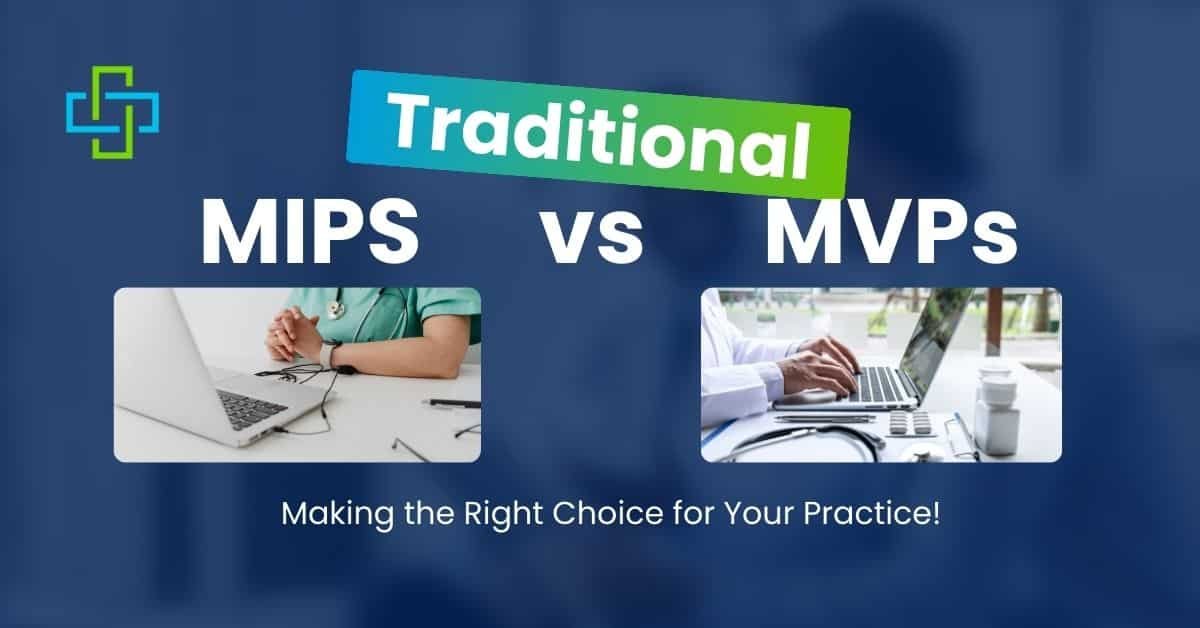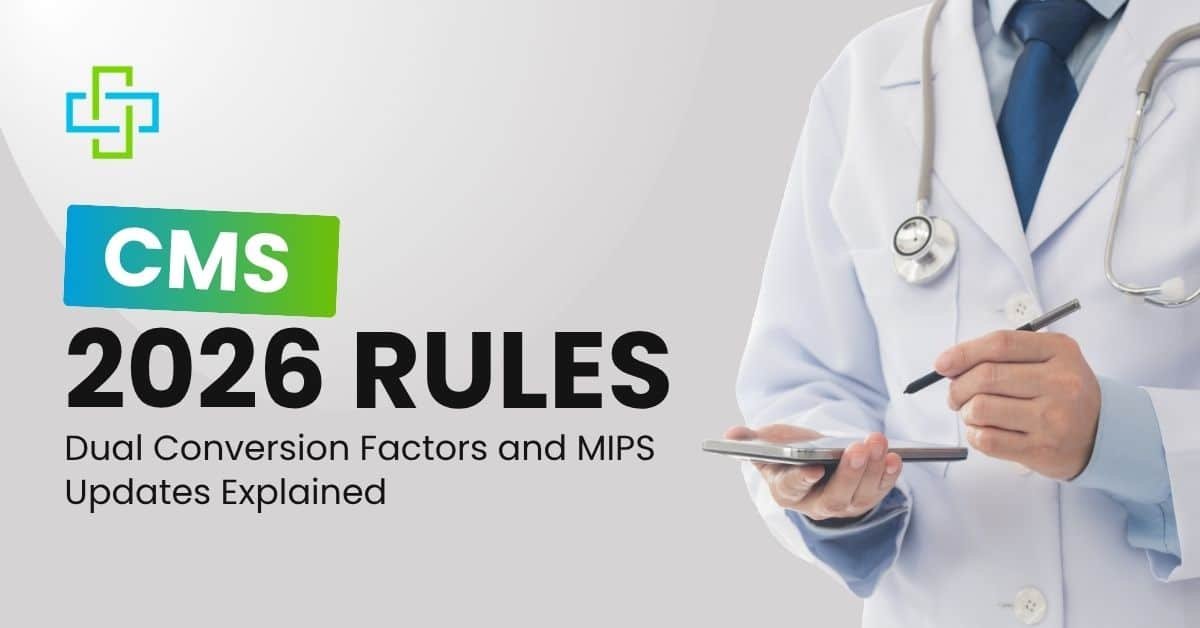Healthcare providers are facing a big decision about Medicare quality reporting. Should you continue with traditional MIPS or switch to MVPs? Understanding Traditional MIPS Vs MVPs helps you pick what’s right for your practice.
The Merit-Based Incentive Payment System has been around since 2017. Most doctors know how it works by now. But there’s a newer option called MVPs that makes reporting easier. Let’s look at what each system offers and which might work better for you.
How Traditional MIPS Works?
Traditional MIPS is how doctors have reported quality data to Medicare for years. The system checks four areas: quality of care, cost, improvement activities, and technology use.
The best part about traditional MIPS is choice. You pick from many measures. Cardiologists can choose heart-related measures. Family doctors can select measures matching their daily work. This flexibility helps practices customize reporting to fit their needs.
But this flexibility creates extra work. You track many different things. Small practices often get buried in paperwork and data entry. Administrative tasks take time away from patients, which is what doctors prefer doing.
What MVP Reporting Offers?
When looking at Traditional MIPS Vs MVPs, you need to understand how MVP reporting works differently. Instead of picking individual measures from a long list, MVP reporting groups related measures into packages. These packages focus on specific specialties or care types.
Think of it like a combo meal instead of ordering each item separately. The combo comes with items that make sense together. For example, there’s a pathway for eye doctors with measures about eye care.
The goal is to make MIPS reporting simpler and more focused on what matters for your practice type. Instead of reporting six quality measures like traditional MIPS, you might only report four under MVPs. The measures target your specialty, making them more relevant to daily work.
Main Differences You Should Know
The debate about traditional MIPS Vs MVPs comes down to the difficulty level. Traditional MIPS gives more choices but requires more work. You pick from dozens of quality measures but must track and report six of them.
With MIPS value pathways, you work with fewer measures. The measures are already chosen based on your specialty. Less freedom to customize means less time figuring out which measures to use.
Improvement activities differ too. Traditional MIPS requires small practices to report one activity and larger practices to report two. You choose from a long list. With MVP reporting, you report just one activity no matter your practice size, picking from about 14 options.
The cost category works the same in both systems. You don’t report anything for cost. Medicare calculates this automatically from claims data. The difference is which cost measures apply to your specialty.
Why Some Practices Keep Traditional MIPS?
Some practices stick with what they know. If you’ve done MIPS reporting services for years, you’ve built systems around it. Your staff knows the process, and your electronic health records capture the right data.
Traditional MIPS works well if your practice is unique or serves diverse patients. The flexibility to choose measures means picking ones that reflect your actual care. A MIPS registry helps manage all this data, and many practices have found registries that work well.
For practices that spent time and money on current setups, switching might not make sense yet. If it’s not broken, don’t fix it.
Benefits of Switching to MVPs
Looking at traditional MIPS Vs MVPs, the MVP offer real advantages. The biggest is simplicity. Less paperwork means more patient time. For small practices with limited staff, this helps a lot.
The measures focus on actual clinical care. Instead of tracking things that don’t matter for your specialty, you report on measures directly related to patient treatment. This leads to better insights and quality improvements.
Many practices find that the reduced paperwork improves staff morale. Nobody entered healthcare to fill forms. Cutting administrative work without losing quality helps everyone.
Making Your Decision
How do you decide on traditional MIPS Vs MVPs? Start by looking at your current situation. How much time does your staff spend on MIPS reporting now? Are you happy with the results? Do you have resources to switch?
If you’re struggling with traditional MIPS paperwork, MVP reporting is worth trying. The transition takes effort upfront, but the payoff could be big. You’ll update systems and train staff, but many practices find that this pays off quickly.
If you’re doing well with traditional MIPS and have good systems, you might wait. There’s no rush to switch. You can always move to MVPs in future years when ready.
Consider working with Prime Well Med Solutions. They understand both systems and can help figure out which option makes financial sense. They also explain how different scoring systems might affect Medicare payments.
Technology and Registry Support
Whether you pick traditional MIPS or MVP reporting, you need good technology. A quality MIPS registry makes a big difference in how much work reporting takes.
Many registries now support both traditional MIPS and MVPs. If you’re using a registry that works well, check if it supports MVP reporting. This makes transitions easier if you decide to switch.
Your electronic health record system matters too. Some EHR systems have built in quality reporting tools. Others work better with separate registries. Understanding technology options is important for your decision.
The Bigger Picture
When comparing traditional MIPS Vs MVPs, remember that both systems want the same thing. They both try to improve patient care and reward doctors providing quality services.
The good news is you have options. CMS qualified registry isn’t forcing everyone to switch to MVP reporting right now. You can try it, and if it doesn’t work, go back to traditional MIPS next year.
Many experts think MIPS value pathways represent the future of quality reporting. The simpler approach makes sense for practices and Medicare. But the transition takes time, and traditional MIPS isn’t going away soon.
Success Tips for Either System
No matter which system you choose, success needs good planning. Start early each year. Don’t wait until the last minute for quality reporting.
Make sure everyone on your team knows what needs to be done. Quality reporting isn’t one person’s job. The whole practice must work together to capture data and submit accurate reports.
Keep good records all year long. It’s easier to report quality measures when you’ve tracked them all along rather than fixing everything at year end.
Stay informed about program changes. Medicare updates rules often. What worked last year might not work this year. Subscribe to CMS updates or work with consultants who track these changes.
Final Thoughts
Picking between traditional MIPS Vs MVPs affects your practice’s money and operations. Take time to understand both options fully before deciding.
Talk to other practices in your specialty about what they’ve experienced. Learn from what worked and what didn’t. Join professional groups that teach about quality reporting.
Remember, the best choice for your practice might not work for everyone. Think about your situation, including practice size, specialty, patient population, and available resources.
Both traditional MIPS and MVPs have the same goal: getting high-quality patient care and rewarding doctors who deliver it. Whether you choose familiar traditional MIPS vs MVPs reporting, focus on giving excellent patient care. Our MIPS reporting company can guide you through either path, making sure you succeed with traditional MIPS Vs MVPs.




